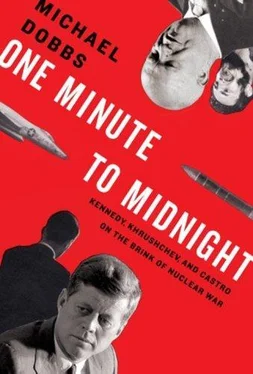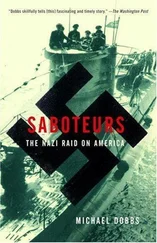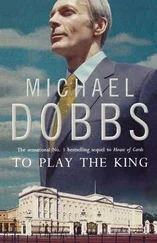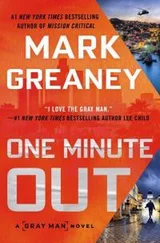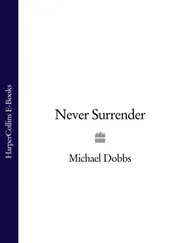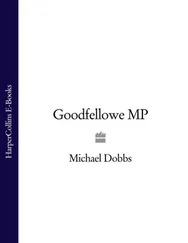The six Navy Crusaders: OPNAV 24-hour resume, 270000 to 280000, CNO Cuba, USNHC; flight record sheet supplied to the author by Lt. Cdr. James A. Kauflin.
“Move it out!”: Author’s interview with Capt. Edgar Love, October 2005; flight track in NPIC report on Blue Moon missions, October 27, 1962, CREST; Raw intelligence film, NARA.
The president turned his attention: The State Department draft was prepared by George Ball and his deputy, Alexis Johnson—Johnson OH, JFKL. A copy of the preliminary draft is in Maxwell Taylor Papers, NDU.
McNamara erroneously reported: According to pilot debriefs, no planes were hit. It is unclear how many planes took part in the afternoon mission. Gen. Taylor told the ExComm that two planes turned back with engine trouble and six others overflew Cuba. According to other reports, only six flights were scheduled for the afternoon of October 27—see, e.g., Pentagon war room journal for October 27, NSAW.
“This is a stinking double-cross”: Scali’s memos to Rusk were published in Salinger, With Kennedy, 274-80. See also ABC News program on John Scali, August 13, 1964, transcript available through NSAW.
The deputy chief of intelligence: Author’s interview with Thomas Hughes, March 2006. Scali and Hughes entered the White House together at 5:40 p.m.—WH gate logs, JFKL.
“twelve pages of fluff”: JFK3, 462.
He proposed new, more conciliatory language: Rusk read the text of the Stevenson draft to the ExComm. I found the original State Department draft among Maxwell Taylor’s Papers at NDU. See also Alexis Johnson OH, JFKL.
He suggested his brother tell Khrushchev: This later became known as the “Trollope ploy,” discussed in the Afterword (pp. 344-5). Numerous writers, e.g., Graham Allison in Essence of Decision, claim that, on Bobby’s advice, JFK decided to respond to the first Khrushchev letter and ignore the second. This is a gross oversimplification of what took place. JFK did not ignore the second letter. The following chapter gives the details of how he addressed the Turkey-Cuba issue.
“the noose was tightening”: RFK, 97.
and went looking for Marlene Powell: Author’s interview with Marlene Powell, September 2003. See WP Magazine, October 26, 2003. According to the History of the 4080th Strategic Wing, Jane Anderson was notified that her husband was missing at 5:50 p.m. on October 27.
Around 1:00 a.m., Khrushchev got: Troyanovsky, 250; Sergei Khrushchev, 363.
a “signal of extreme alarm”: Khrushchev letter to Castro, October 30, 1962, NSAW Cuba.
“a young horse that hasn’t”: Shevchenko, 106.
“We are not struggling”: Khrushchev letter to Castro, October 30, 1962, NSAW Cuba; Sergei Khrushchev, 364.
to “stomach the humiliation”: NK1, 499.
CHAPTER THIRTEEN: CAT AND MOUSE
By the afternoon: The U.S. Navy labeled the Soviet submarines in chronological order, based on time of sighting. The first to be positively identified was C-18 (Soviet designation B-130, commanded by Nikolai Shumkov) at 241504Z. The others were C-19 ( B-59, Valentin Savitsky) at 252211Z; C-20, later identified as C-26 ( B-36, Aleksei Dubivko), at 261219Z; and C-23 ( B-4, Ryurik Ketov) at 271910Z.
“Submarine to starboard”: Carrier Division Sixteen, Cuban missile crisis documentation, NSAW.
“Dropped five hand grenades”: Logbooks of Beale and Cony, NARA, also available through NSAW.
“Submerged submarines”: Secretary of Defense message to Secretary of State 240054Z, NSAW Cuba.
“The president has been seized”: JCS Poole notes.
“he would want to know”: Time magazine profile, July 28, 1961.
danger of getting “bogged down”: JCS message 051956Z, CNO Cuba, USNHC.
Electronic eavesdroppers on board: Intercepted message reported in ExComm meeting, interview with Keith Taylor, USS Oxford, November 2005; tracking intercept described in Harold L. Parish OH, October 12, 1982, NSA.
FIRE HOSE: CINCAFLANT messages 27022Z and 280808Z, CNO Cuba, USNHC. Some writers have claimed that the White House had to talk LeMay out of ordering the immediate destruction of a SAM site—see Brugioni, Eyeball to Eyeball, 463-4. Notes taken by JCS historian Walter Poole suggest this was not the case. The JCS favored continuing reconnaissance flights until another loss occurred and then attacking all SAM sites “as a minimum”—see Chronology of JCS Decisions, October 23, 1962, NSAW. For JCS opposition to piecemeal measures, see October 27 memorandum on “Proposed Military Actions in Operation Raincoat,” OSD.
The men were falling “like dominoes”: Mozgovoi, 92, Havana 2002, vol. 2.
According to regulations: Yesin et al., Strategicheskaya Operatsiya Anadyr’, 84; Mozgovoi, 71. The flotilla commander was Capt. 1st class Vitaly Agafonov. He was traveling on submarine B-4.
Arkhipov and Savitsky were equal in rank: Both men had the rank of captain 2nd class, the Soviet equivalent of a commander. The officer in charge of the torpedo was a captain 3rd class, equivalent to a lieutenant commander in the U.S. Navy.
“The Americans hit us”: Mozgovoi, 93; Orlov interview with the author, July 2004. Other submarine commanders have questioned Orlov’s version of events. Arkhipov and Savitsky are both dead. While it is impossible to know the precise words used by Savitsky, Orlov’s account is consistent with other descriptions of the conditions on board the Soviet Foxtrots and the known movements of B-59.
“There were sharp disagreements”: RFK, 102.
his “terrific executive energy”: Schlesinger, Robert Kennedy and His Times, 625.
“almost telepathic”: Schlesinger, “On JFK: An Interview with Isaiah Berlin,” New York Review of Books, October 22, 1998.
The final version bore the marks: See State Department and Stevenson drafts, and ExComm discussion.
The inner ExComm agreed that: Accounts differ as to who attended this meeting. According to Rusk, it was attended by JFK, RFK, McNamara, Bundy, and “perhaps one other,” in addition to himself—Letter to James Blight, February 25, 1987, NSAW. According to Bundy, the meeting was also attended by Ball, Gilpatric, Thompson, and Sorensen—see McGeorge Bundy, Danger and Survival (New York: Random House, 1988), 432-3.
Drawing on a cable: The formula proposed by Rusk was first suggested by the U.S. ambassador to Turkey, Raymond Hare, in Ankara cable 587, which arrived at the State Department on Saturday morning—NSAW.
“No one not in the room”: Bundy, 433. For another account, see Rusk, 240-1.
a “complex and difficult person”: Dobrynin, 61. In an October 30, 1962, memo to Rusk, RFK said he asked Dobrynin to meet him at the Justice Department at 7:45 p.m. (FRUS, Vol. XI, 270). But RFK was running late. The ExComm session did not end until around 7:35. RFK then attended the meeting in the Oval Office, which lasted around twenty minutes. He likely met Dobrynin around 8:05 p.m., at the same time the State Department transmitted the president’s message to Moscow—ibid., 268.
“tapping telephone conversations”: KGB profile of RFK, February 1962, SVR.
as “very upset”: Dobrynin cable to Soviet Foreign Ministry, October 27, 1962. I have reconstructed this account from the Dobrynin cable, the RFK memo to Rusk, and RFK, Thirteen Days, 107-8. The RFK and Dobrynin accounts match each other closely, although Dobrynin is more explicit, particularly on the withdrawal of the Jupiters. On the Jupiter discussion, the contemporaneous Dobrynin cable seems more credible than the various RFK accounts. The official U.S. story on the Jupiters has changed over the years. Former Kennedy aides, such as Ted Sorensen, have acknowledged playing down or even omitting potentially embarrassing details. See articles and documents published by Jim Hershberg, CWIHP, 5 (Spring 1995), 75-80, and 8-9 (Winter 1996-97), 274, 344-7, including English translations of the Dobrynin cables.
Читать дальше
